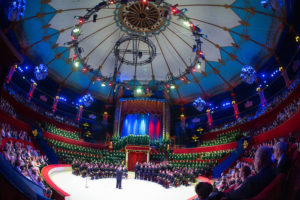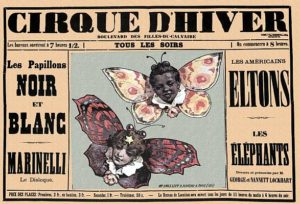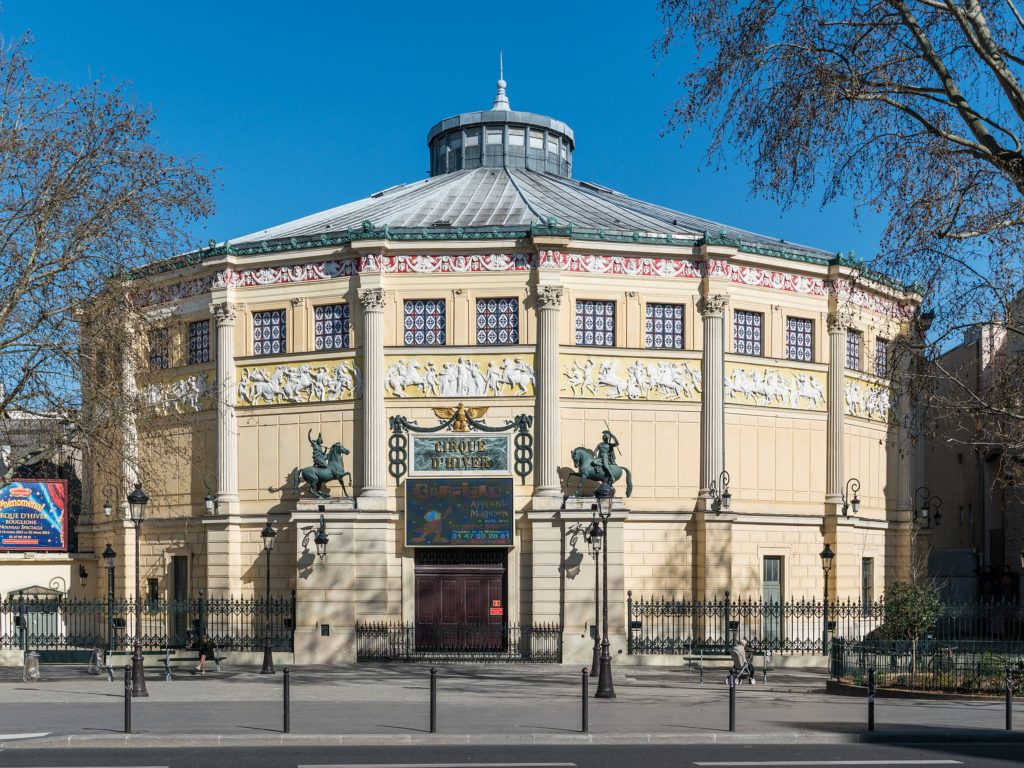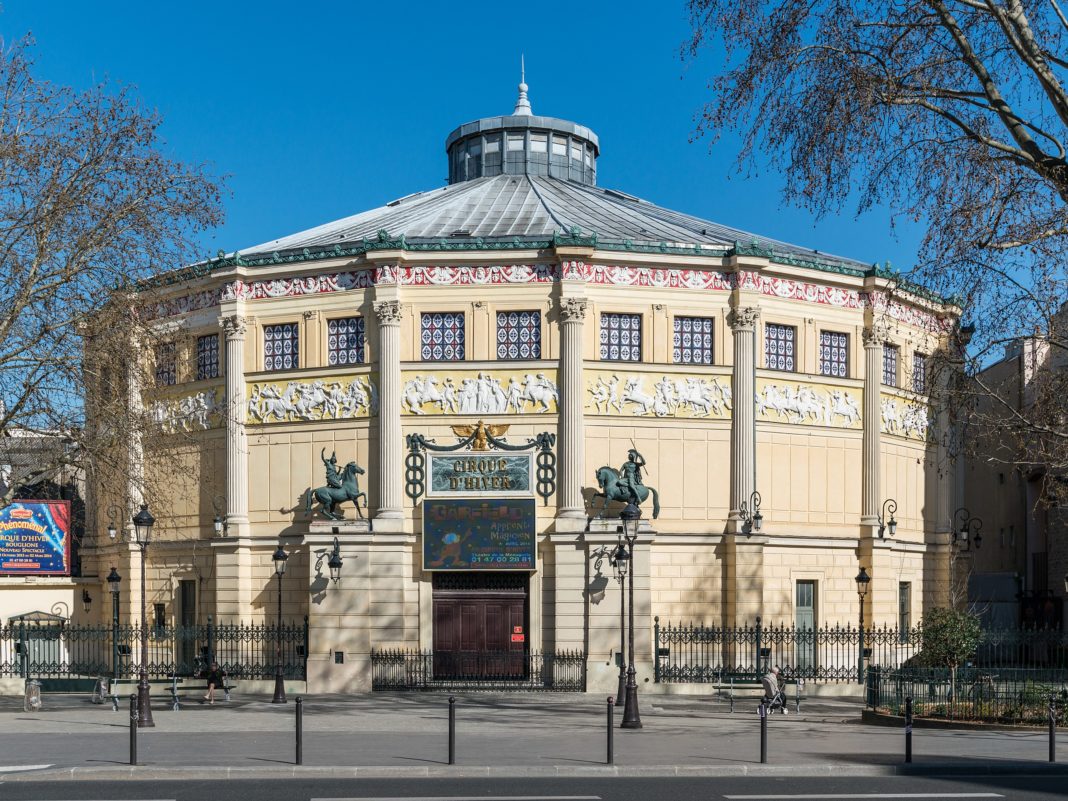The Cirque d’Hiver (“Winter Circus”), located at 110 rue Amelot (at the juncture of the rue des Filles Calvaires and rue Amelot, Paris 11ème), has been a prominent venue for circuses, exhibitions of dressage, musical concerts, and other events, including exhibitions of Turkish wrestling and even fashion shows.

The Cirque d’Hiver was built for circus entrepreneur Louis Dejean (1786-1879) to serve as his circus company’s winter home. Dejean already managed the Cirque des Champs-Elysées in the fashionable Jardins des Champs-Elysées, which he kept open from May through October. Up to 1846, his main establishment had been the Cirque Olympique, located some five hundred yards from his new circus, on the portion of the Boulevard du Temple that disappeared in 1862 to give room to the present Place de la République, during the renovation of Paris by the Baron Haussmann.

When the new circus opened its doors on December 11, 1852, nine months only after the beginning of its construction, Louis-Napoléon Bonaparte, the nephew of the late Emperor Napoléon I, had just proclaimed himself Emperor of the French under the name of Napoléon III a few days earlier, on December 2.

The circus is an oval polygon of 20 sides, with Corinthian columns at the angles, giving the impression of an oval building enclosing the oval ring, surrounded by steeply banked seating for spectators, very much like a miniature indoor Colosseum. A low angled roof is self-supporting like a low dome, so that there is no central pole, as under a tent, to obstruct views or interfere with the action.
According to Wikipedia; circopedia















